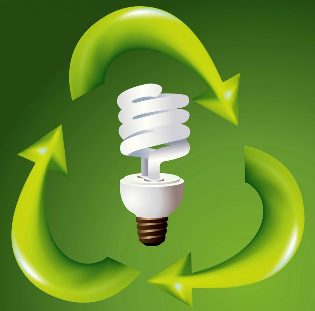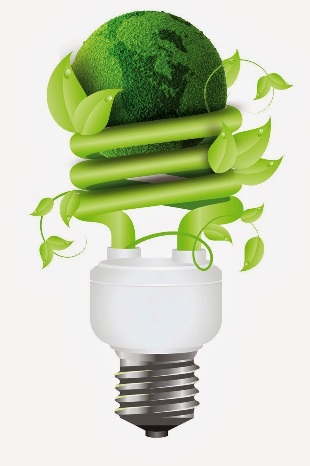This article describes in detail a list of all of the common organizational measures for the conservation of electrical energy.
Typical organizational activities for energy saving
- The appointment of the person responsible for the provision of services to the energy savings
- Training in the field of energy saving and improve the efficiency of the staff, responsible for the provision of services to the energy savings
- Material stimulation of the staff at the energy saving
- Improvement of the operation of the institution, and the optimization of lighting systems, ventilation, water
- The introduction of on and off times of the lighting systems, ventilation, heat, air etc.,
- Rationing the consumption of energy
- Appointment of the responsible for the control of power systems
- The organization of work for the operation of lamps, cleaning
- Awareness-raising with staff and students in the field of energy saving
- Election campaign in terms of energy saving
- The development and introduction of systems to encourage employees of the institutions for actions aimed at energy saving
- Increasing the technical knowledge in the field of energy saving of some categories of the staff of the institutions
- The creation of a management system

Common technical measures for energy saving
The power supply system
- The installation of load switches before the power transformers
- The removal of defects and switching equipment electric
- Replacement of oil high-voltage circuit breakers vacuum
- Replacing obsolete transformers with modern
- Reduction of losses of electrical energy in the cable network
- Reduction of losses of electric energy through the improvement of the power factor
- The increase of the coefficients of even loading the food to the consumer and transformer substations and to limit their minimum
- Maintaining nominal levels of voltage in the networks
- A uniform distribution of the load-balanced
- Equipment, power systems, systems monitoring electrical energy consumption
- The reduction in the number of personal appliances (immersion heaters., coffee makers, kettles, etc.,)
- Optimization of the time-of-use of office equipment
- The application of frequency control systems of the water pump
- The introduction of energy-saving burners, kitchen hot plates
- Room thermostats for electrical heating systems
Lighting system
- Reduction in the consumption of electricity for the purpose of lighting, through the reconstruction of an existing system of lighting through the installation of light sources and high energy efficiency
- Reduction of the field of application of luminaires with incandescent lamps and their replacement luminaires with fluorescent lamps
- Replacement of fluorescent lamps old edit lamp on the new generation of lower power
- Replacement of the traditional lighting systems to led
- Replacement of the electromagnetic regulating devices of fluorescent lamps, more reliable and economic electronic
- Paint the walls of the premises in a lighter tone
- The decentralization of power on-off lighting through the installation of a couple of switches and divide the area of lighting in necessary areas
The heating system

- Collection of guides for the use, management, and maintenance of heating systems, the periodic control of the management of the institution for their execution
- The envelope for heating systems, measuring devices
- The hydraulic system of the internal regulation of the heating system
- Annual chemical cleaning of the internal surfaces of heating of heating system, and heat exchangers
- The automation of the heating systems of the buildings through the installation of points of individual heat (ITP) with adjustment of heat flow
- Removal of ornamental fences with radiators
- The installation of the reflectors for radiators heating
- The installation of thermostatic valves, valves for radiators heating
- Replacement of a pipe of the heating system two-pipe
- The installation of air heat
Hot water system
- Collection of guides for the use, management, and maintenance of systems, production of hot water, periodic control of the management of the institution for their execution
- The automation of the control system DOMESTIC hot water
- Software of circulating water system DOMESTIC hot water
- Reduction of consumption through the optimization of costs and the control of the temperature
- Setting up of systems of production of hot water meters hot water consumption
- The reduction in heat loss during the transport of the pipes through the insulation
- The introduction of thermal insulation of pipes on the basis of superfine insulation product characteristics
- Economic application folding rebar
- Reduction of costs and water waste
The consumption of water
- Replacement of steel ducts water supply
- The introduction of systems of water recycling
- The introduction of water treatment systems
- Economic application folding rebar
- Reduction of costs and water waste
Heat recovery
- The introduction of heat recovery in a building
- The improvement of the energy efficiency of the systems of drying
The ventilation system
- The optimization of ventilation systems
- The deactivation of ventilation systems during the lunch break and outside of the business
- An application to block the fan air barrier with the opening mechanisms of the doors
- Replace obsolete fans with low modern EFFICIENCY with the highest EFFICIENCY
- Replacing obsolete ventilation unit plants, low modern EFFICIENCY with the highest EFFICIENCY
- The application of frequency control of the speed of rotation
- The application of automatic devices for adjustment and control of ventilation systems in function of the temperature of the outside air (even with the use of VFD)
The air-conditioning system
- Turn on the air conditioner only when necessary
- The exception of superheating and subcooling of the air in the spaces
- The maintenance of the regulators, of the surfaces of the heat exchangers and equipment
jpg" class="imgblock right center_mob">
Pumping stations
- The modernization of the pumping unit
- Upgrading electrical drive of the pump
- The stabilizer of pressure in hydraulic systems
Compressed air system
- The introduction of an automated system of management of the process of production of compressed air
- The decentralisation of air conditioning
- The introduction of the installation drying of the compressed air to the compression station
- The redevelopment of a wide range of machinery for the refrigeration
Electrical equipment
- The introduction of welding inverter with microprocessor card management schemes
- Reduce to a minimum the loss of electrical energy in the welding of hardware in the event of breakage of the arc
- Upgrade the rectifier to the aggregation of the electrodeposition of phase
- The introduction of heating systems with high temperature loads
Construction and building envelope of the building
- The reduction of heat loss through the window openings by the installation of a third glass or PVC film between the frames in a space of windows
- Reduction of heat loss through the window openings by installing fuel-efficient reflective window film
- Additional glasses polycarbonate mobile
- Improve the thermal insulation of façades, ceilings, walls, floors and ceilings, roofs, etc
- Reduction of heat losses of heat by the fixation of compensation joints between the panels of houses
- Hydrophobization of walls (water-repellent characteristics of the product the walls)
Boilers and thermal plants
- Collection of guides and regime cards of operation, management and maintenance of the hardware and a periodic control of the management of the institution for their execution
- The maintenance of the coefficient of excess air, and good mixing with the fuel
- The installation of surface water economizer for boiler
- Application for heating systems, assemblies, installations of deep disposal of heat, systems using the latent heat of vaporization output of the exhaust gas (pin heat exchanger)
- The increase of the temperature of the feed water entering the boiler drum
- The heating of the feed water in the water heat exchanger
- The maintaining the purity of the internal and external surfaces heating boiler
- Cleaning of the limestone on the internal surfaces of the boiler heating boilers ultrasonic method
- The use of the exhaust of the boiler by means of sampling of hot air from the upper part of the combustion zone of the boiler rooms and serve in the suction power line of the fan
- The thermal insulation of the internal and external surfaces of boilers and ducts, sealing of the valves and of the section of the boiler (the temperature on the surface of the product characteristics of bricks should not exceed 55 degrees C)
- The installation of metering systems cost of fuel, electricity, water and heat
- Automation control of the boiler operation
- Application of frequency drive to control the speed of rotation of the pumps, fans, and snails
- Translation of steam boilers, in water mode
- Translation of steam heating systems
- Rational use concurrent boilers
- The installation of cogeneration units (mini-CHP)
- The installation of a system to return condensate
- The installation of an expander bleed the radiator and the water silvia
- Recovery of product characteristics in bricks boilers
Vehicles
- Translation of cars from petrol to gas
- Maintain a uniform air pressure in the tires
Energy account

- The introduction of automation of information-measuring systems (goals) accounting of electric power and heat
- The modernisation and extension of the system of exchange of technology information
- The creation of a centre for the collection and processing of data
The energy saving company is one of the most urgent problems with which the industry is facing. This is due to the constant increase in the cost of energy and other energy resources. Production spend their finance for the raw materials and materials, fuel, the performance of the work, but the most expensive is the payment for the energy component.
Energy-saving measures, which will allow you to spend will allow your company to significantly reduce the cost of energy and therefore positively affect the technical and economic performance of a company or production. This is a time observed the increase of profitability and improvement of the competitiveness of products, reducing the cost of production or services.
























